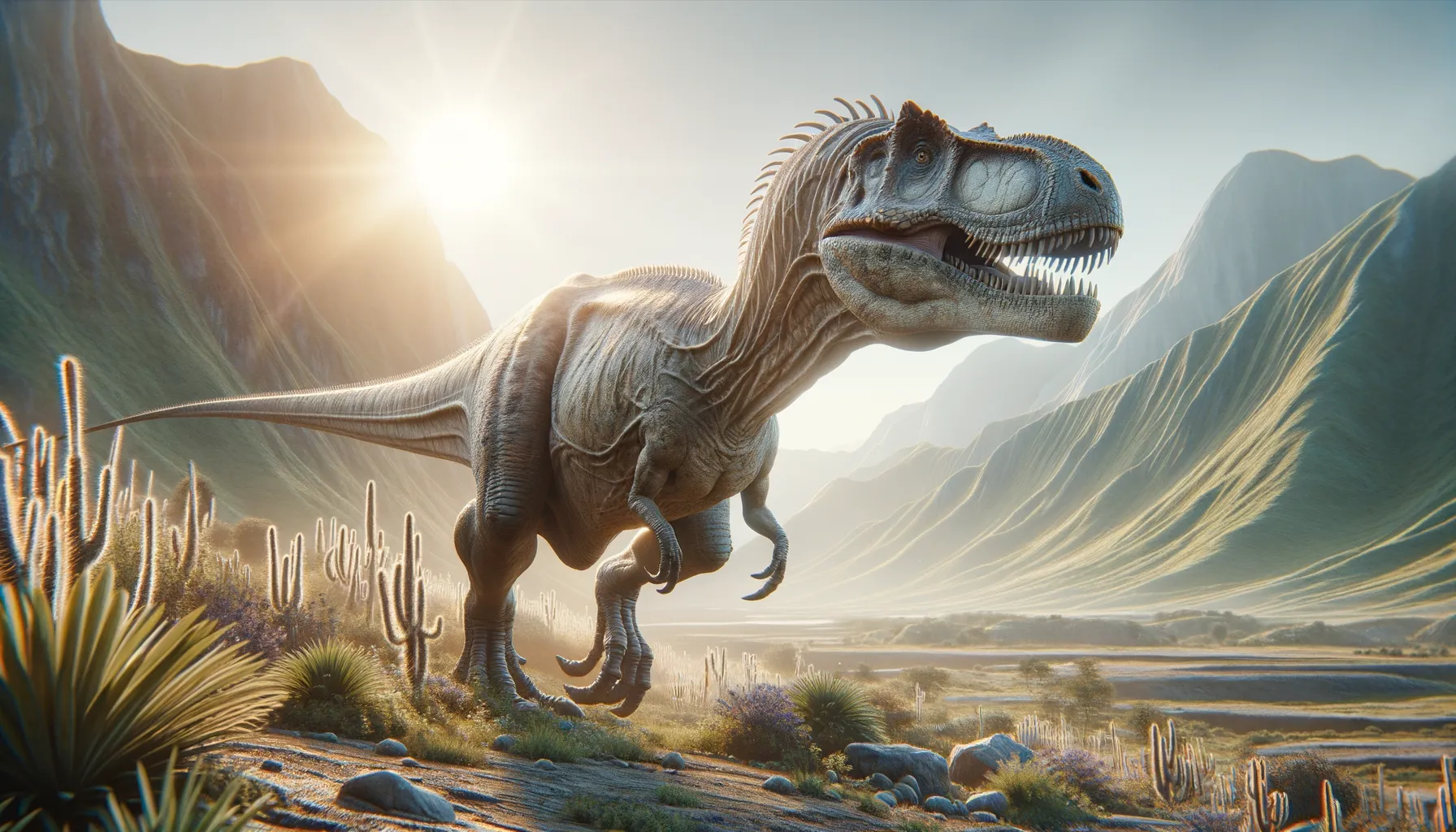
Sinocoelurus
Unraveling Jurassic mysteries, one tooth at a time.
Period
Jurassic
Length
Estimated to be around 3 to 4 meters long.
Height
Height dimensions are unclear.
Weight
Weight estimates are not available.
Sinocoelurus is a little-known theropod dinosaur that lived during the Late Jurassic period. It is recognized from fragmentary remains, primarily teeth, discovered in China. The limited fossil evidence makes it challenging for paleontologists to form a complete picture of its appearance and behavior. Despite the scarcity of remains, Sinocoelurus contributes to the broader understanding of dinosaur diversity during the Jurassic period. Continued research and new discoveries may eventually shed more light on this enigmatic dinosaur.
Diet
It is presumed to have been a carnivore based on tooth structure, capable of consuming small to medium-sized prey. The precise details of its diet are not well-documented due to limited fossil evidence.
Hunting
With limited available fossils, specific hunting patterns remain unknown. However, as a likely carnivorous theropod, it probably relied on speed and agility, hunting smaller vertebrates or scavenging.
Environmental challenges
Living in the Late Jurassic, Sinocoelurus faced dynamic environmental conditions with fluctuating climates. Competition for resources with other predators might have been significant, influencing its survival strategies. The surrounding flora and fauna were diverse, affecting its availability of prey. The changes in sea levels during this period also impacted its habitat and resource distribution.
Speed
Unknown due to lack of fossil evidence.
Lifespan
Lifespan details remain speculative.
First discovery
Discovered by Friedrich von Huene in 1929.
Fun Facts
- Sinocoelurus lived during the Jurassic period, around 160 million years ago.
- It was discovered in China and its name means 'Chinese hollow tail'.
- Sinocoelurus was a theropod, which means it was a bipedal carnivore.
- Very little is known about Sinocoelurus due to the scarcity of fossil remains.
- The original fossils of Sinocoelurus were found in the Shaximiao Formation, a famous fossil site.
- Sinocoelurus is considered one of the more mysterious dinosaurs due to its incomplete fossil record.
- Despite its limited remains, Sinocoelurus helps scientists understand the diversity of small theropods in the Jurassic period.
Growth and Development
Due to scarce fossil records, details of Sinocoelurus' growth patterns remain speculative. Like many theropods, it may have experienced rapid growth during juvenile stages. Understanding its development depends heavily on the discovery of more complete specimens, which might provide insights into its life cycle.
Habitat
Sinocoelurus likely lived in forested environments rich with vegetation, which supported a variety of prey species. The landscape of the Late Jurassic period in present-day China included lush surroundings that fostered biodiversity. Rivers and wetlands in the region would have supported its survival, providing water resources and attracting prey.
Interaction with other species
Interactions with other species would have included competition with other carnivores for food. It might have had some form of ecological relationship with herbivorous dinosaurs, either as their predator or via other ecosystem interactions. The extent of these interactions remains largely speculative, dependent on additional fossil finds.
Natural lifespan
Its natural lifespan is unknown due to limited fossil data.
Reproduction
As a theropod, it likely reproduced by laying eggs, much like modern birds and other dinosaurs. Nesting behavior is not documented due to insufficient evidence. Its reproductive strategies remain speculative, pending future fossil discoveries that could provide evidence of eggs or nesting sites.
Social behaviour
There is no direct evidence of social behavior due to limited fossils. If it behaved like some other theropods, it may have been solitary or lived in small groups. Understanding its social structures would benefit from further fossil evidence showing potential group living formations.
Fossil locations
Fossil remains attributed to Sinocoelurus have been found primarily in the Shandong province of China. The specimens consist mostly of teeth and a few bone fragments. Future excavations in this region might yield more information about this elusive dinosaur and its contemporaries.
